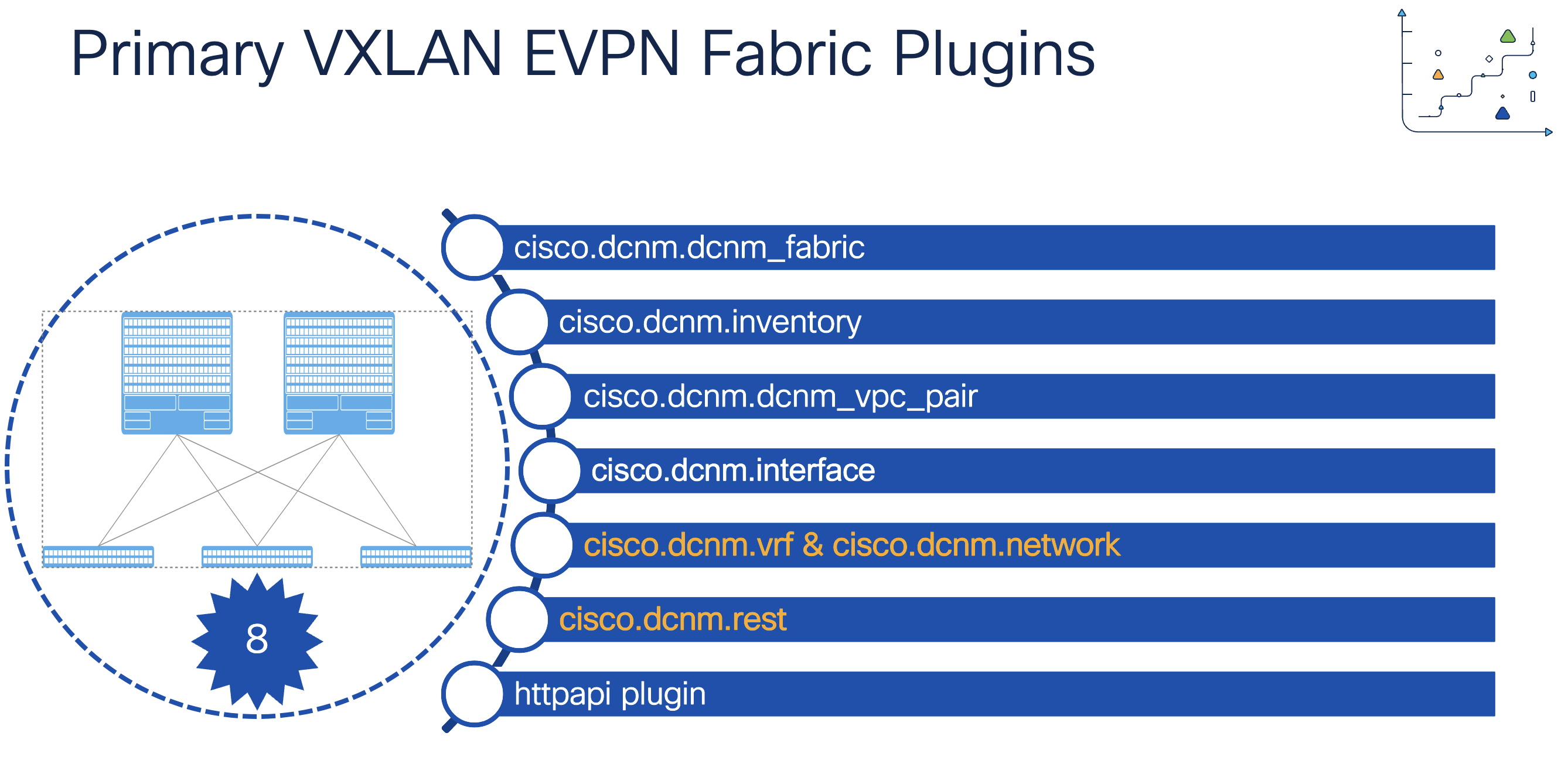
While a complete discussion around Ansible Content Collections is outside the scope of this Lab, this section provides some basic background information to ensure that you understand basic collection terms and functions. If you have used Ansible Content Collections in previous learning labs or other sessions, feel free to skip this page and move on.
Ansible Content Collections are a packaging format for bundling and distributing Ansible content such as plugins,
roles and modules. They can be released independent of other Ansible collections or the ansible-base engine so
features can be made available sooner to users.
They are installed using the ansible-galaxy collection install command
This represents the Fully Qualified Collection Name(FQCN) for the NDFC Ansible collection.
ansible-galaxy collection install cisco.dcnm
The NDFC Ansible collection namespace for this lab is cisco and the collection name is
dcnm.

An Ansible Playbook for NDFC might look as follows,
- name: Configure NDFC VRF Object and Deploy To Fabric Switches
cisco.dcnm.dcnm_vrf:
fabric: cisco-live
state: replaced
config:
- vrf_name: vrf-red
vrf_id: 9008011
vlan_id: 2000
attach:
- ip_address: 192.168.1.224
deploy: true
The Ansible NDFC modules in the collection were originally developed for DCNM. NDFC support was added later using the same code base but for backward compatibility, the same FQCN is used. The collection's connection plugin automatically detects if the controller is running as DCNM or NDFC so no changes are needed to the playbooks when automating for DCNM or NDFC.
In this example, the Ansible task will use the cisco.dcnm.dcnm_vrf module from the
collection to
configure a VRF object on the NDFC fabric named cisco-live and then attach
and
deploy the VRF to the fabric switch with IP address 129.168.1.224
All documentation for the NDFC Ansible collection can be found on Ansible Galaxy. Navigate to Ansible Galaxy to see the list of modules and review the documentation.
